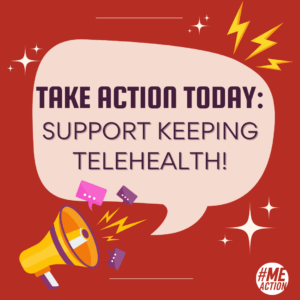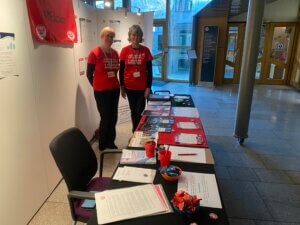After the March 8th telebriefing with the NIH, many advocates in the ME community still came away with questions. Billie Moore, NJME/CFSA Advocacy Chair, and member of the USAWGaAnd CDC’s TDW Workgroup, was one of them.
Though representatives of the NIH spoke at great length about the big picture of the new ME/CFS efforts that the organization is making, there were still a few gaps when trying to understand the infrastructure of the new plan. Following the March 8th call, Billie Moore wrote up a list of questions to be answered by Dr. Koroshetz and sent them in via email. The answers are from Marian Emr, director of the office of communications and public liaison at NINDS and are in quotes under each question.
Dr. Koroshetz,
There is still a good deal of confusion within the ME/CFS advocacy and patient community as to what the exact status is of this disease within NINDS. It has been represented to some that it has been incorporated into NINDS. Yet we cannot locate any information that suggests this goes beyond the development and work of the recently reconstituted Trans-NIH ME/CFS Work Group and the new study now being created, both of which are very much appreciated by those in the community.
We all acknowledge that both of these initiatives are vital and important, and we are very encouraged by the fact that the Work Group apparently is meeting often. Yet the community would like to see a formal statement from NINDS (or NIH) explaining the actual location of this disease within the NIH and whether it has been moved from the ORWH to an NIH Institute.
There are questions that the ME/CFS community would like to have answered:
- Has the disease been formally brought under the umbrella of any NIH Institute beyond the creation of a Trans-NIH ME/CFS Work Group and this one study?
“Because the cause of ME/CFS is unknown, the research will profit from a trans-NIH effort and the resources of multiple Institutes and Centers.”
- If so, who is the person responsible for the disease within that Institute – responsible for creating a strategic plan, funding needs, etc?
“Dr. Koroshetz currently leads trans-NIH working group which includes representatives from 23 NIH institutes, centers and offices. You can find the full list of representatives on the NIH website at http://www.nih.gov/mecfs/trans-nih-mecfs-working-group-members“
- If not, are there any other diseases which affect as many people in the U.S. as ME/CFS which do not have an Institute in charge of their future within the NIH?
“A number of major disorders are the responsibility of more than one NIH Institute. In terms of neurological disorders alone, examples include brain tumor research which is shared by NCI and NINDS; sleep research which is shared by NHLBI and NINDS; autism research which is shared by NICHD, NIMH and NINDS, and muscular dystrophy research which is shared by NINDS, NIAMS, and NHLBI.”
- Are there any Institutes, aside from NINDS, willing to set aside funding for this disease to get the needed research started on the myriad aspects of ME/CFS? For instance, a grant can be rejected because one Institute determines that another Institute should be covering it.
“The trans NIH working group will work to optimize assignments of ME/CFS grants. In addition, NIH will partner with other Federal agencies on ME/CFS initiatives, as appropriate to the mission of each agency.”
- If a strategic plan is being discussed, what are the key responsibilities of the NINDS Director versus the Trans-NIH Working Group on that core responsibility?
“The trans-NIH working group works collaboratively to develop strategic plans and promote initiatives. The NINDS director serves as chair of the group”
It is the opinion of many in the community that ME/CFS patient/advocate/expert involvement in the decisions of the NIH and NINDS (or other Institutes) would not only inform the community much better than has been the case in the past but that such involvement on a regular basis would go a long way to making the jobs of you and others at NINDS much easier. By communicating frequently with some from the community – not just two or three people, although we appreciate your talking to them – the confusion, misinformation, lack of information and, frankly, some strange choices could be minimized greatly. “Regular basis” is not two CFSAC meetings per year, by the way. Monthly or bi-monthly meetings are needed via conference calls at minimum.
Dr. Koroshetz, we are very encouraged by your heading up the Trans-NIH ME/CFS Working Group. We have every desire to work with you productively so that the community can see progress and involvement can be positive. Thank you for your attention to these very important issues affecting those with ME/CFS and those who care for them.
Billie Moore
NJME/CFSA Advocacy Chair
Member, CDC’s TDW Workgroup





